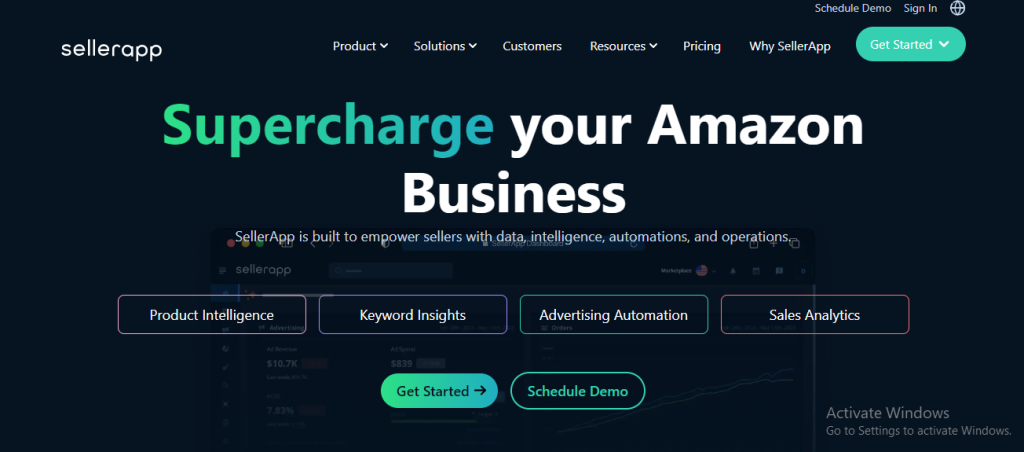
Cracking the code of Amazon. in can feel like navigating a digital jungle. But fear not, fellow sellers! The secret weapon to boosting your product visibility and driving sales lies in mastering keyword research on Amazon.in. Here’s your ultimate guide to conquering Amazon. in the keyword landscape:
Why Keywords Matter on Amazon. in
Amazon. in’s, search algorithm prioritizes products with relevant keywords woven into their listings. When a customer types in a search query, the algorithm matches it with product titles, descriptions, and backend keywords. The better your keyword targeting, the higher your product ranks in search results, increasing its visibility and driving sales.
Understanding the Power of Keywords
Keywords are the search terms customers use to find products. By strategically incorporating relevant keywords into your product listings (title, description, bullet points, and backend keywords), you increase your chances of appearing in relevant search results. This translates to more eyeballs on your product, and ultimately, more sales.
Delving into the Amazon.in Algorithm
While the exact formula remains a mystery, we know Amazon.in’s, search algorithm prioritizes listings that closely match a customer’s search query. It also considers factors like product reviews, sales history, and competitor performance. Keyword optimization is a crucial piece of the puzzle, influencing how your product ranks.
Building Your Keyword Arsenal
There are several ways to identify high-performing keywords for your Amazon. in listings:
- Brainstorming: Put yourself in your customer’s shoes. What terms would they use to find your product? Jot down a list of relevant keywords.
- Amazon Autocomplete: Start typing a keyword related to your product in the Amazon. in the search bar. The suggestions that pop up are gold! These are real search terms customers are using.
- Keyword Research Tools: Consider free and paid tools like Jungle Scout, Helium 10, or MerchantWords. These tools offer a treasure trove of keyword data, including search volume, competition level, and related keywords.
Choosing the Right Keywords: It’s Not Just About Volume
Don’t get lured by just the highest search volume. Here’s what to consider when selecting your keywords:
- Relevance: Do the keywords accurately reflect your product and its features?
- Search Volume: Is there enough traffic for the keyword to be worthwhile?
- Competition: Can you compete with established sellers ranking for that keyword?
- Conversion Rate: Are customers searching with this term likely to buy?
Pro Tip: Aim for a mix of high-volume, medium-competition keywords and long-tail keywords (more specific phrases). This strategy helps you capture both broad and targeted searches.
Optimizing Your Listings for Success
Once you have your keyword list, strategically integrate them throughout your product listing:
- Product Title: Include your most important keyword at the beginning of your title.
- Description: Weave relevant keywords naturally throughout your description, highlighting product features and benefits.
- Bullet Points: Use keywords to showcase key selling points.
- Backend Keywords: This is your hidden keyword treasure chest. Include a broader range of relevant keywords here.
Remember: Keyword research is an ongoing process. Regularly monitor search trends, analyze your listing performance, and adapt your keyword strategy as needed.
Bonus Tip: Leverage the Power of Amazon.in Reviews
Positive reviews sprinkled with relevant keywords can further boost your product’s ranking. Encourage satisfied customers to leave reviews that mention the keywords you’re targeting.
Step-by-Step Keyword Research with Amazon-Specific Tools
While understanding the customer journey is crucial, powerful tools can supercharge your keyword research on Amazon.in:
- Seed Keyword Brainstorming: List down broad terms related to your product. Let’s say you sell yoga mats. Brainstorm terms like “yoga mat,” “exercise mat,” or “workout mat.”
- Amazon Search Suggestions: Type your seed keyword into the Amazon.in the search bar. The platform offers suggested searches based on real user queries. Note down these suggestions and explore them further.
- Leveraging Keyword Research Tools: Several free and paid tools can elevate your research. Popular options include Jungle Scout, EcomStal, Helium 10, and MerchantWords. These tools offer features like:
- Search Volume: See how many times a keyword is searched for per month.
- Competition Level: Gauge how difficult it is to rank for a particular keyword.
- Related Keywords: Discover new keyword ideas based on your seed terms.
4. Analyzing Competitor Listings: Identify the keywords your successful competitors are targeting. Look for gaps in their strategy and opportunities for differentiation with unique keywords.
By mastering keyword research on Amazon.in, you unlock the gateway to greater product visibility and skyrocketing sales. So, put on your explorer hat, delve into the world of keywords, and watch your Amazon. in business flourish!
More Blogs From TKC on Amazon Seller Tools
Best Free Amazon Image and Video Downloader in 2024
EcomStal: Simple and Affordable Amazon Seller Tools Kit in 2024
Best Amazon Keyword Research Tool by EcomStal in 2024
Affordable and User-Friendly Amazon Keyword Research Tool By EcomStal
Best Free Amazon Video Downloader in 2024





